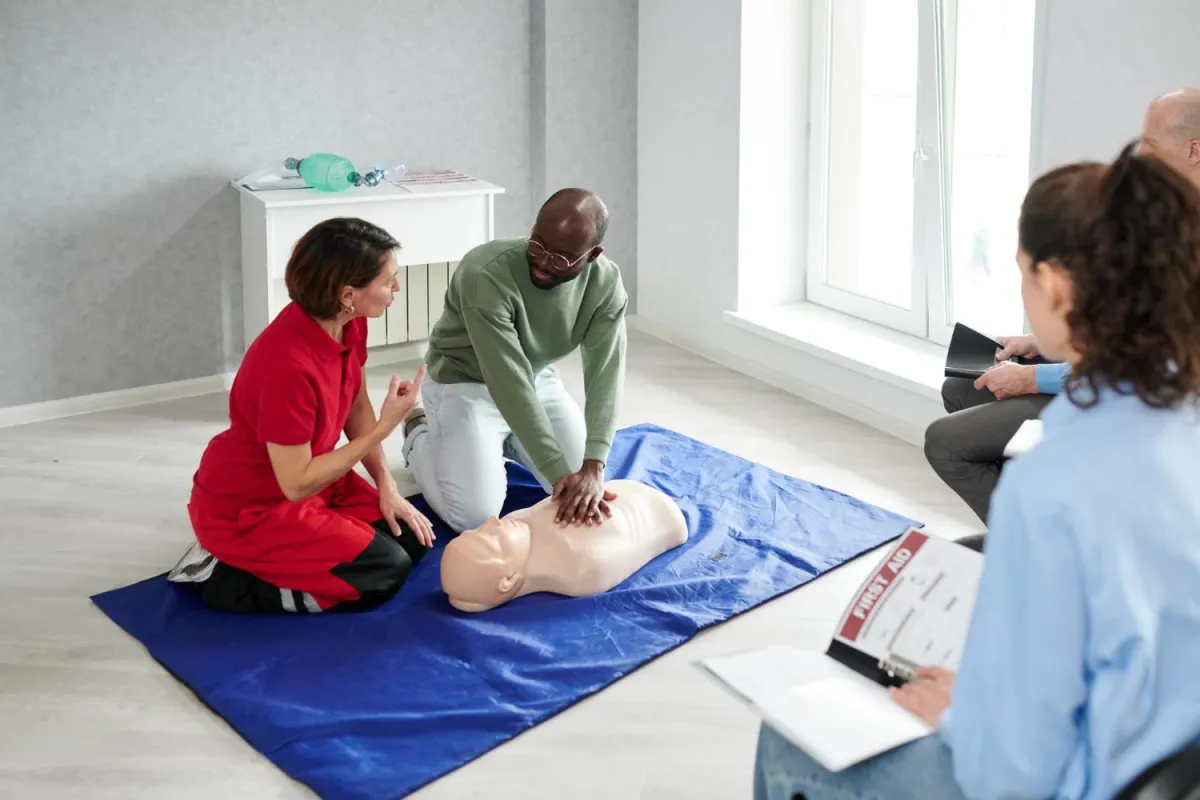
How to Prepare for a CPR Training Course
Being prepared for a CPR training course can make a big difference when it comes to saving lives. Imagine going into a classroom ready to learn, knowing that soon you'll have the skills to help someone in a medical emergency. This preparation isn't just about reviewing course materials—it’s about understanding the impact of what you're about to learn. With CPR certification, you can offer peace of mind to yourself and those around you, knowing you're equipped to act when every second counts.
CPR training is one of those essential skills that can give you the confidence to step in and assist in an emergency. It’s much more than a set of procedures; it prepares you mentally to handle real-life situations. As we delve into how to get ready for your CPR course, we'll explore what the training involves, how to prepare both mentally and physically, and what you’ll need to bring to make sure you're all set.
Understanding CPR Training
CPR training is a course that teaches you how to save lives by performing cardiopulmonary resuscitation. You’ll learn vital techniques like chest compressions and rescue breathing, which are crucial skills during cardiac emergencies. A typical CPR course will guide you through the steps of assessing emergency situations, recognizing signs of cardiac arrest, and effectively performing CPR until professional help arrives. You’ll also get hands-on experience with CPR manikins, helping to build confidence in your ability to perform the techniques in real situations.
During these courses, expect to watch demonstrations, participate in practice sessions, and receive instruction from certified trainers. It's practical and interactive, designed to help you gain confidence through repetition and feedback. The training may also include how to use an Automated External Defibrillator (AED), providing an even broader set of life-saving skills.
Preparing Mentally and Physically
Getting ready for the course isn't just about showing up; it’s about preparing your mind and body to absorb and retain the information taught. Mentally preparing for CPR training involves having an open mindset, ready to absorb new skills and knowledge. It’s important to focus on understanding the steps rather than just memorizing them. This comprehension will help you recall details in real emergencies without hesitation.
To prepare physically, consider light exercises that boost your endurance and concentration. Simple activities like stretching or taking a brisk walk before training can keep you energized and alert. Here are a few tips:
- Get enough sleep: A good night's rest can help you stay focused and active during the training.
- Eat a healthy breakfast: Start your day with a nutritious meal to boost your energy and concentration.
- Stay hydrated: Drink plenty of water to keep your mind clear and ready to learn.
Preparing in this way ensures you're physically and mentally primed to take on the challenges and responsibilities that come with CPR certification.
What to Bring
Preparing for a CPR training course means making sure you have everything you need to make the most of your experience. While the instructors will provide most of the essential tools, it's a good idea to bring a few personal items that can enhance your training day. First, wear comfortable clothing. You'll be moving around, practicing on CPR manikins, and possibly even kneeling for extended periods, so something that allows freedom of movement is key.
Here’s a quick checklist of what else to consider:
- Notebook and pen: Jotting down notes can help you remember critical points and review them later.
- Water bottle: Staying hydrated is important, especially if the session is long.
- Course materials: If you've received any materials ahead of time, bring them along for quick reference.
By taking these simple steps, you can ensure you're comfortable and focused on learning rather than worrying about what you might have left behind.
Practical Tips for Success
Mastering CPR skills requires more than just attending class. Actively participating and engaging with the material can significantly boost your confidence and knowledge. To get the most out of your training:
1. Ask questions: Don't hesitate to speak up if you're unsure about anything. Trainers are there to help, and clarifications can deepen your understanding.
2. Practice diligently: Take advantage of practice sessions on the manikins. The physical memory you build during these exercises helps reinforce your learning.
3. Partner up: Working with fellow trainees can offer new perspectives and make the experience more enjoyable. Sharing tips and encouraging each other can foster a supportive environment.
Remember, the goal is not just to pass the course but to feel ready to use these skills confidently if the situation arises.
Wrapping Up Your Training
Once your CPR training is over, it’s important to keep your skills fresh. Practicing regularly, whether it’s with a training buddy or solo, helps keep the steps top of mind. One way to stay sharp is to review your notes or any course materials provided. These resources can serve as a handy refresher whenever you need a quick reminder.
It's also helpful to stay connected with others who have undergone CPR training. They can provide encouragement and perhaps even practice along with you periodically. Consider joining workshops or refreshers if they’re available; these can offer new insights or allow you to practice less common techniques.
Every step you take after training solidifies your skills, ensuring you're ready when called upon. Taking your readiness seriously not only bolsters your confidence but also reassures those around you that, in an emergency, you'll be the calm, steady presence needed to make a life-saving difference.
For those ready to strengthen their lifesaving skills, joining a CPR training center is your next step. Life Rescue Training can help you gain the confidence and expertise needed for effective emergency response. Don't wait—get certified and be prepared to make a difference when it matters most.